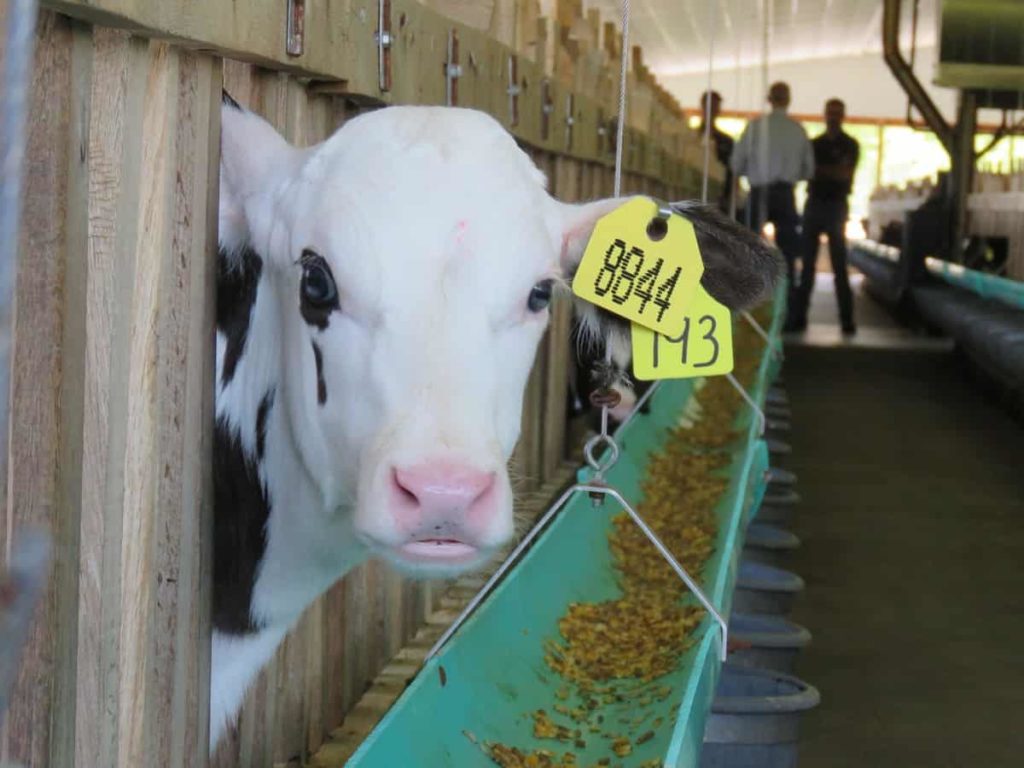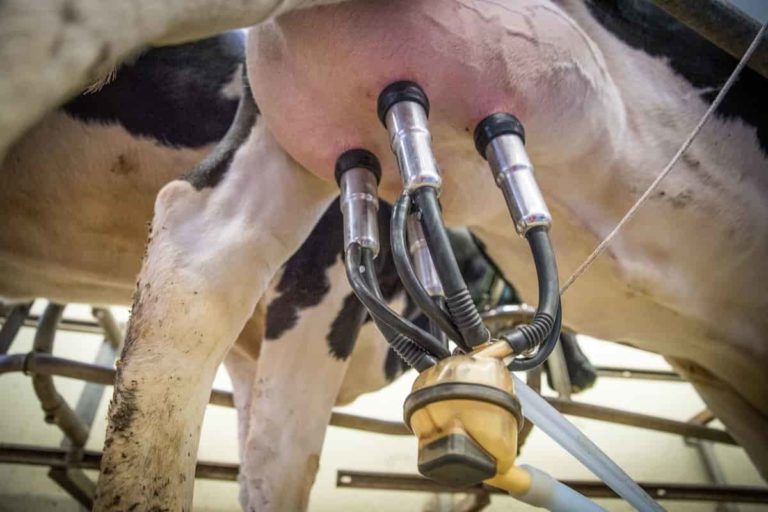A farming method for long-term milk production is dairy farming. It's a capital-intensive enterprise that needs careful management and long-term investment. For the development of your business, selecting dairy equipment of the highest caliber is crucial. Before being sold, the milk needs to be processed further after it has been gathered. Let's examine the machinery required for dairy production.
What is the best equipment for dairy farming?
It should be taken into account that equipment used in dairy farming lowers labor, operational, and time costs. Make sure there are spare components available for the equipment so they can be quickly replaced. From pasteurization to storage, everything must be done correctly. The amount of mechanization needed and the size of the operation determine the necessary machinery and equipment. A chaff cutter machine, milking pails, milk cans, and small tools are among the machinery and supplies that are most essential.
Machine feeding may be more convenient and cost-effective than manual feeding when used on more than 20 dairy animals. If one wants to keep a high-yielding cross-breed cow, fans and mist cooling devices must be installed in animal sheds for protection from heat stress. A milk fridge, power generator set, and utility vehicle are necessary for dairy farms with 50 or more milking cows, as well as a tractor for their harvesting and transportation.
Dairy farming equipment: tiny dairy machinery details
Housing for dairy animal housing
Shelter Providing your dairy cows with some sort of shelter, such a cowshed, is one of the most crucial things you can do. It's crucial to recognize the value of having a cozy, clean place to stay. First and foremost, a suitable shelter will safeguard your dairy cows from the outside elements at your dairy farm. Never again will your cows have to endure the winter's bitter cold or the rain. Additionally, you will avoid the oppressive heat during the summer.
Nevertheless, the cowshed's inside is equally as crucial as the building's outside. It must be kept inside dry and spotless. You can maintain your cows' health and stop the spread of any infections by doing this. Your dairy cows will produce a lot of milk for you if they are happy and healthy. Simply put, content cows equal content dairy farmers.
Misting cooling system
The equipment's attention to the environment inside the cowshed is another crucial component. A mist cooling system, which is one of its fundamental components, can be seen in several public spaces throughout the summer.
Feeding apparatus
You will also need equipment to help feed them since dairy cows may now live comfortably indoors. A feed grinder is essential for dairy farmers that opt to utilize grain-based feed. For the benefit of dairy cows, a feed grinder is a mill that blends and grinds bovine feed. If you want to feed grains to cows, you need this equipment. You can choose the precise proportions of the materials you wish to feed your dairy cows using a feed grinder.
It has a variety of ingredients, including cereals, grass, maize, and corn. The cow will consume and digest the feed much more easily after it has been processed using a feed grinder. They will remain healthy, content, and able to produce the most milk since their bodies will be able to absorb all the nutrients more effectively.
Cutters for green feed
You could also spend money on green fodder cutters. Green crops like beans, cereals, grasses, and tree-based crops are included in green fodder, a type of feed for dairy cows. You must use a mechanical tool to break up green fodder into small pieces if you want to feed it to your cows. When it's finished, combine it with additional ingredients and feed it to your dairy cows. Because they chop the meal into tiny pieces, green fodder cutters are crucial. The cow can chew, swallow, and digest these chunks easier since they are more manageable.
Clover cutter
A chaff cutter is a device that chops up feed. The feed is fed into the machine, grasped between two-toothed rollers, and then moved to a share plate where it is mounted on a large flywheel and rotated in short lengths by knives. The type of power used to operate chaff cutters can be determined; these can be manually operated, animal-powered, etc.
Meat grinder
Usually, farm products are crushed or chopped into smaller pieces. Typically, cutting is done with a few blades. The product is reduced to more useable sizes by the crushing process. The feed for cattle made from grain can be processed by the farmer using this kind of agricultural machine called a grinder. The digestion and acceptability of the feed are typically enhanced by grinding the contents.
Milking and other necessary tools
One of the key pieces of dairy farm equipment is milking machinery. General-purpose milking equipment, milk cooling and storage equipment, equipment that increases cow comfort, and other barn and transportation equipment, including milk trucks and wash vats, are the four primary categories.
Teat spray robots and automatic milk separators are two of the most popular milking tools used to increase dairy farming productivity (TSRs). There are closed-loop water systems, mat vats, plate coolers, tanks, and silos for cooling and storing milk.
For the wellbeing of their dairy herd, many dairy producers will use a variety of tools and equipment. Cows are captured, kept cool, and maintained clean with the help of fans, activity systems, holding pen cooling equipment, misting equipment, sorting gates, and cow-activated brush systems. Pasteurizers, separators, homogenizers, and tanks are a few pieces of fundamental milk processing equipment. The primary apparatus is a milking machine.
Pasteurizers
Pasteurization is frequently a crucial step in the processing of milk. Machines called pasteurizers will simplify this process for you. In order to prepare milk for storage or further processing, a milk pasteurization unit will heat the milk, keep it at a specific temperature for a predetermined amount of time while continuously stirring it, and then cool it. Bacteria or hazardous substances are present in cow milk. Milk is heated to destroy any bacteria that may be present.
Separator
Skimmed milk and cream are separated with this. All of these ingredients, which are used to create milk products, are made of plastic, aluminum, and stainless steel.
Agitators and tanks
Products are kept in the tanks. Equipment called homogenizers splits impermeable liquids into emulsions. Accommodations and refrigerators are additional items.
Milking equipment
From dairy animals, milk is extracted using a milking machine. A motor facilitates the process of milking. A suction created by the vacuum pump travels through a conduit to the milking apparatus. A device known as a Pulsator alternately uses suction and the environment to move between the rubber lining and the area between the metal walls. The liner collapses and extracts the milk when the environment is attached to the area between it and the metal walls.
Dairy tanks
Liquid dairy products are stored in pre-stack tanks, milk tanks, interim tanks, and mixing tanks to preserve their freshness for as long as feasible. These are crucial pieces of machinery for processing milk if you want to produce goods that are of excellent quality, are fresh, and are secure.
Robotic milker
Because they provide the cows with more milk, these are not optimal. It's crucial to keep an eye on the cow when it's being milked. This procedure outpaces hand milking in speed.
Pipeline milking
A permanent return pipe, a vacuum pipe, and instantaneous cell entry apertures are used in the milking pipeline. The system may be installed above the cowshed or around the entire barn. The device is attracted to by the milker's nipples' sucking force, and the vacuum mechanism draws the milk into the pipes. Milk enters the storage tank through a vacuum breaker and gravity. Milking buckets, efficient space management, herd management, and labor are all eliminated as a result.
Dairy farmers routinely use the following farm equipment
Additionally, large operations will need tractor tools, fodder compacting presses, and cow feed vehicles. Generators, electric fences, tanks, moveable fences, and forage harvesters are examples of additional equipment.
There are many uses for dairy producers' equipment beyond merely milking. Additional agricultural equipment is needed to create energy for the operations of dairy production, storage, and transportation of dairy feed. Large generators are frequently needed to provide electricity for all dairy equipment and environmental controls, as well as;
- Feed trucks
- Presses for compacting feed
- Fodder block equipment
- chaff cutters for feed
- Tractors \sTanks
- Harvesters
- Reapers
- feed crates
- tractor loaders
- Feed mills
- milk jugs
- Autonomous bore wells



